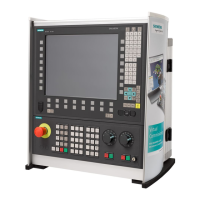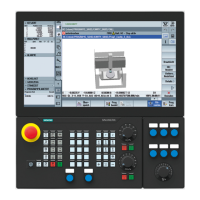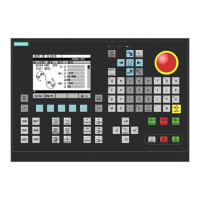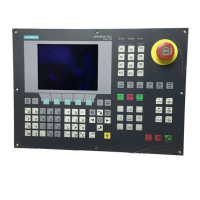Detailed Description
2.5 Toolholder with orientation capability
Tool Compensation (W1)
2-96 Function Manual, 08/2005 Edition, 6FC5397-0BP10-0BA0
Specification of the toolholder with orientation capability
The toolholder with orientation capability is represented by a general 5axis kinematic
sequence described by a data block in the tool compensation memory with a total of 33
REAL values. For toolholders that have two rotary axes for setting the orientation (e.g., a
millhead), 31 of these values are constant.
In the current SW version, a data block in the tool compensation memory is described with a
total of 47 REAL values. For toolholders that have two rotary axes for setting the orientation,
45 of these values are constant.
The remaining two values are variable and are used to specify the orientation. The constant
values describe offsets and directions and setting options for the rotary axes; the variable
values describe the angles of the rotary axes.
2.5.4 Machine with rotary table
System variables
To date, the angles stored in $TC_CARR13 and $TC_CARR14 were used for the calculation
of the active tool length with TCOABS. This still applies if $TC_CARR21 and $TC_CARR22
do not refer to rotary axes. If $TC_CARR21 or $TC_CARR22 contains a reference to a rotary
axis in the channel, the axis position of the relevant axis at the start of the current block is
used as the angle, rather than the entry in $TC_CARR13 or $TC_CARR14.
A mixed operating mode is permissible, i.e., the angles can be determined from the entry in
the system variables $TC_CARR13 or $TC_CARR14 for one axis, and from the position of a
channel axis for the other.
This makes it possible for machines, on which the axes used to set the toolholder with
orientation capability are known within the NC, to access their position directly, whereas it
was previously necessary, for example, to read system variable $AA_IM[axis] and write the
result of the read operation to $TC_CARR13/14. In particular, this removes the implicit
preprocessing stop when reading the axis positions.
MD20180
If machine data:
MD20180 $MC_TOCARR_ROT_ANGLE_INCR[i] is zero,
the rotary axis position is used with its programmed or calculated value.
If the machine data is not zero, however, the position used is the nearest grid point obtained
for a suitable integer value n from the equation:
φ = $MC_TOCARR_ROT_ANGLE_OFFSET[i] + n * $MC_TOCARR_ROT_ANGLE_INCR[i]
when n is an integer.
This functionality is required if the rotary axes need to be indexed and cannot, therefore,
assume freely-defined positions (e.g., with Hirth tooth systems).
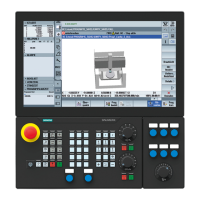
